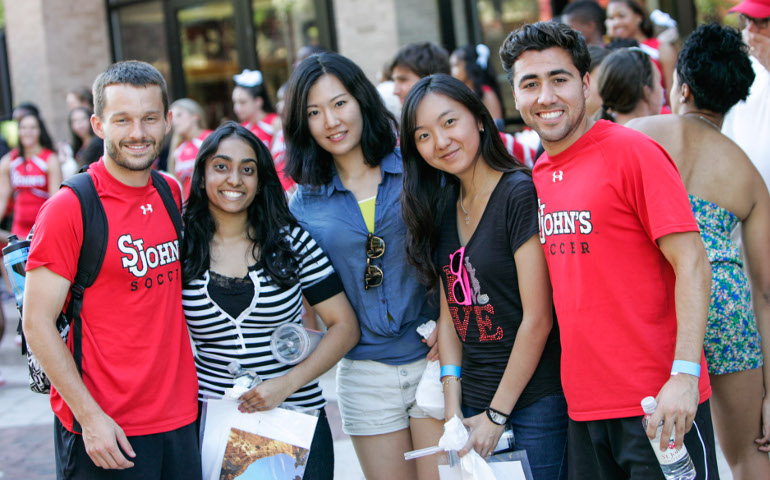
St. John’s University students attend St. John’s Fest. (St. John’s University)
Ask anyone on the campus of St. John’s University in New York why their community is so diverse, and you’re bound to get a diversity of answers.
For the past 15 years, St. John’s has been named by U.S. News and World Report as one of the top schools for campus ethnic diversity, reaching the No. 2 spot among national universities in 2015, and tying at No. 5 in 2016.
“Diversity is such a part of who we are, to a certain extent we take it for granted,” said Robert Mangione, provost and vice president for academic affairs at St. John’s. “Where other schools set diversity as a goal, we consider it our identity.”
Mangione, who has served in various administrative roles at the university for nearly 40 years, said that when he visits other institutions that are not as diverse, he feels “out of place.”
“If I were to pinpoint a specific reason why St. John’s is such a diverse institution, I think the most significant reason is that students from all backgrounds feel welcome here and they have an identity here,” Mangione reflects. “That’s very consistent with Catholic social teaching.”
The university was founded at the request of the Bishop John Loughlin, the first Roman Catholic bishop of Brooklyn, who, in 1865, reached out to the Vincentian Fathers to establish “a day College where the youth of the City might find the advantages of a solid education.”




